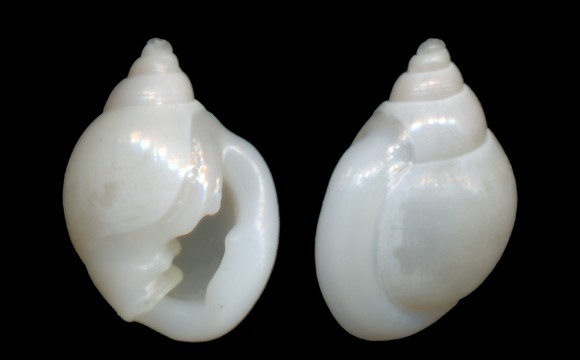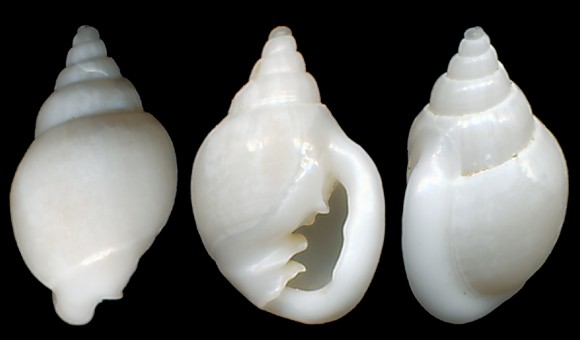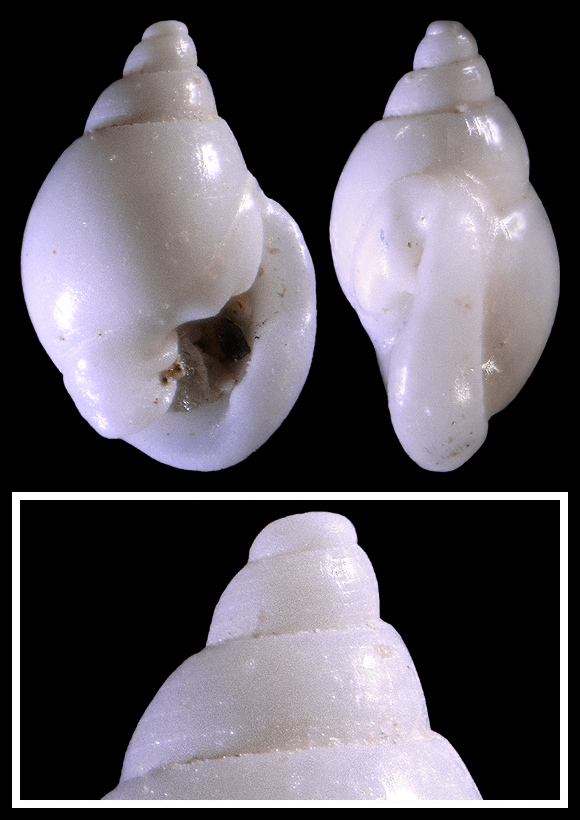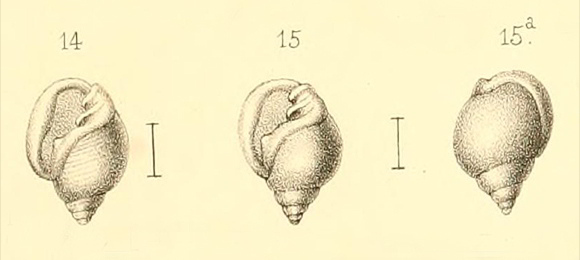
Predator in the infralittoral and the circalittoral.
45-50m deep, Gibraltar, Andalucia, S. Spain. 3mm.

« Shell included in my “Nuova Rivista” as a variety of the previous one [auriculata]. The shape and arrangement of the teeth are different, the aperture is more contorted and, moreover, the test is not streaked superficially. In some localities, this species presents, on the first whorls, an appearance of vertical folds. It is found on many points of the Mediterranean, but at a greater depth than the preceding species, and it exists in the Atlantic. » – T. A. di Monterosato: “Note sur quelques coquilles provenant des côtes d’Algérie”, H. Crosse translator, Journal de Conchyliologie vol. XXV, Paris 1877, p.44. Columellar folds stronger than in auriculata.
Specimen collected in shell grit at 110m deep, off Motril, Granada, Andalucia. 3,5mm.

Notice the weak spiral striae on the early whorls.
500m deep, Capo Teulada, Cagliari, S. Sardinia. 2,3mm.

« This Ringicula is of a very ancient origin; it is known in the deposits of the middle Miocene at la Superga near Torino, where it lived together with R. auriculata. It is also found in the lower Pliocene of Italy, near Savona, Villaverma, Masserano, Montafia, etc., then in the upper Pliocene of the Monte Pellegrino, in Picarazzi, the island of Rhodes and in the isthmus of Corinth. » – A. Locard: “Mollusques testacés”, Expéditions scientifiques du Travailleur et du Talisman vol. IV t.1, p.91. – Above: R. auriculata (14, so markedly striate that it could be R. gianninii Nordsieck) and R. Conformis (15, smooth, but not as contorted as average specimens, so this could be auriculata) in L. Morlet: “Monographie du genre Ringicula Deshayes”, Journal de conchyliologie vol. XXVI, Paris 1878, plate V fig.15.